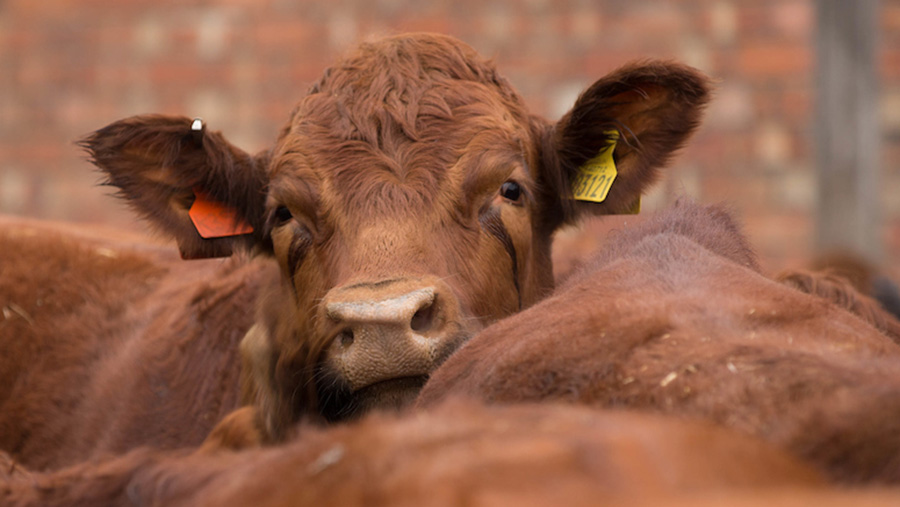How to avoid cross-compliance penalties
 Failure to meet TB inspection schedules could lead to compliance penalties © Tim Scrivener
Failure to meet TB inspection schedules could lead to compliance penalties © Tim Scrivener Each year the Rural Payments Agency releases details of the most common cross-compliance mistakes found during inspections on farms in England the previous autumn.
Even minor mistakes which are simple omissions can lead to a loss of 1% of the basic payment.
Charles Mayson, managing director of consultancy Cross Compliance Solutions analyses the inspection failures and reasons for them so that you can try to avoid them.
Cattle identification problems are invariably towards the top of the list, but statistics from 2015 suggest there are some new issues tripping claimants up.
See also: EU auditors see inconsistency in cross compliance penalties
TB test intervals missed
Total failures found: 1,061
There is a requirement under Statutory Management Requirement 4: Food and feed law for farmers to take steps to prevent the spread of any diseases which could be transmissible to humans, such as bovine TB.
Main failures:
- Producers not meeting their TB testing intervals
- Failure to ensure all eligible animals conform to national herd/flock health surveillance
How to avoid problems:
- Cattle keepers need to book their TB test as soon as they are notified by the Animal and Plant Health Agency.
- Producers are required to ensure that the vet injects all eligible cattle before the expiry of the test window and the reading of all the eligible cattle tested is completed 72 hours after the injection.
Cattle identification and registration failures
Total failures found: 829
Every year a large proportion of BPS penalties are due to incorrect cattle livestock identification and poor record-keeping.
Main failures:
- Movement details not recorded or incorrectly recorded on farm register/database
- Passport not returned after death of animal
- Failure to report movement
- Animals found on farm that are not recorded in the database.
How to avoid problems:
- Record the information immediately – delays in entering movements, births and deaths frequently lead to permanent gaps in the record.
- Form the habit of entering details daily
- When the animal leaves, make sure the passport goes too. If you have a passport, but no animal, then informing the authorities will incur a small penalty. This will be preferable to being caught out in an inspection.
Water pollution risk in Nitrate Vulnerable Zones
Total failures found: 618
There is a long list of records required for farmers with land in an NVZ, which may explain why it is one of the most common cross-compliance breaches
Main failures:
- None of the required NVZ records are available on request
- Records are incomplete
- Temporary field heaps sited in a high-risk location
How to avoid problems:
Records that are required for producers farming in an NVZ include:
- Up-to-date record of the total size of holding, updated within a month if this changes.
- Risk map showing each field, its area in hectares, areas with sandy or shallow soils, parts where the slope is greater than 12 degrees, sites suitable for muck heaps and land with low run-off risk.
- Field records for each crop in each field, where you must record within one week the type of crop and date of sowing, plus the date and details of any manure or fertiliser spread.
- Livestock calculations showing the number of cattle on farm and the amount of nitrogen they produce.
- Details of any imports and exports of manure.
Sheep and goat identification problems
Total failures found: 569
Organisation is key to keeping on top of sheep records which are another danger area for farmers when it comes to cross-compliance.
Main breaches:
- Sheep holding register out of date
- Annual inventory not completed
- Sheep and/or goats have never been tagged or are incorrectly tagged.
How to avoid problems:
- In England, the number of sheep and goats on farm on 1 December must be recorded and the form must be returned to Defra by 31 December.
- Farmers must record in their holding register (HR): ear tag number of any deaths, also when tags are lost, any replacement tag information. When lambs are tagged for the first time (identification) this information must be recorded in HR also. These items are frequently missed and can incur a 3% deduction from the BPS.
Buffer strips alongside watercourses overlooked
Total failures found: 215
Farmers are obliged to protect watercourses against pollution and run-off from agricultural sources by maintaining buffer strips.
Main failures:
- Absence of map detailing areas of surface water at risk from pollution
- Pesticide or fertiliser applied with the one or two metre protection zone
How to avoid:
- The farmer must be able to produce a map of their holding showing: all surface waters and land within 10 metres of them; all springs, wells and boreholes and land within 50 metres of them or the boundary of the holding. Maps must be updated within three months of any change
- All reasonable steps must be taken to maintain the green cover on the protection zone throughout the year.
Other common breaches
- Ignoring the closed period for hedge trimming (runs from 1 March to 31 August in England)
- Ploughing and spraying too close to the hedge – growers must take all reasonable steps to keep a green cover on land within two metres of the centre of a hedgerow
- Siting a manure heap inappropriately, such as on an ancient monument
- Failure to keep medicine records up-to-date
- Surface of a visible, cross-field footpath or bridleway not re-instated properly after the field has been cultivated.
